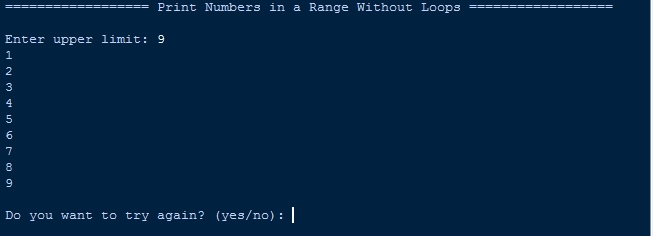How to Print Numbers in a Range Without Loops in Python
In this tutorial, we will learn how to program "How to Print Numbers in a Range Without Loops in Python." The objective is to display numbers in a range without using loops. This tutorial will guide you step by step through methods for generating a sequence of numbers without relying on loops. By the end of this tutorial, you will have a solid understanding of how to implement this task effectively in Python, helping you strengthen your problem-solving abilities and improve your coding skills.
This topic is straightforward to understand. Simply follow the instructions provided, and you will complete it with ease. The program will guide you step by step through the process of printing numbers in a range. So, let’s dive into the coding process!
Getting Started:
First you will have to download & install the Python IDLE's, here's the link for the Integrated Development And Learning Environment for Python https://www.python.org/downloads/.
Creating Main Function
This is the main function of the application. The following code will display a simple GUI in terminal console that will display program. To do this, simply copy and paste these blocks of code into the IDLE text editor.- def printno(upper):
- if upper > 0:
- printno(upper - 1)
- print(upper)
- while True:
- print("\n================== Print Numbers in a Range Without Loops ==================\n")
- upper = int(input("Enter upper limit: "))
- if upper <= 0:
- print("Please enter a positive number greater than 0.")
- else:
- printno(upper)
- opt = input("\nDo you want to try again? (yes/no): ").strip().lower()
- if opt == 'no':
- print("Exiting program...")
- break
- elif opt != 'yes':
- print("Invalid choice. Exiting program...")
- break
This program prints numbers from 1 up to a user-specified limit without using loops, relying instead on recursion. The `printno()` function calls itself repeatedly, decreasing the number each time until it reaches zero, then prints the numbers in ascending order as the recursive calls return. The program also checks for invalid input (like zero or negative numbers) and allows the user to repeat or exit after each run.
Output:

There you have it we successfully created How to Print Numbers in a Range Without Loops in Python. I hope that this simple tutorial help you to what you are looking for. For more updates and tutorials just kindly visit this site. Enjoy Coding!
More Tutorials for Python Language

